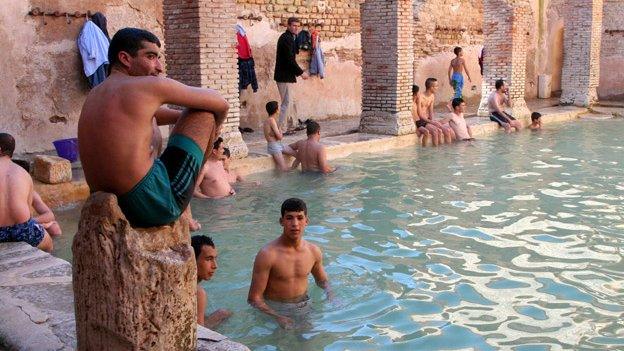Excavation plans for Exeter's Roman Baths
- Published
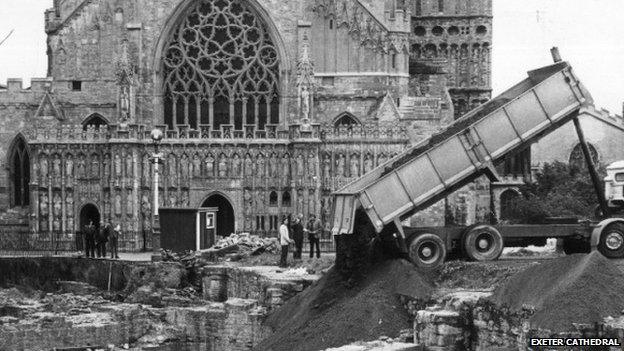
The Roman Baths were discovered in 1971 after excavating a Saxon burial ground
A set of "internationally significant" Roman Baths which lay hidden for almost 2,000 years could be opened to the public in a restoration project announced by Exeter Cathedral.
The site was discovered in 1971 but due to a lack of funds was reburied under the cathedral green to protect it.
A bid for £8.7m has now been submitted to the Heritage Lottery Fund (HLF).
Roman archaeology specialist Dr Martin Pitts said the site "is of major significance".
'International interest'
Dr Pitts, from the University of Exeter, said: "For Exeter to have something like this on its doorstep made visible to everyone is very exciting.
"The baths were of a continental design which shows a close connection between Exeter and the civilised culture of the wider Roman empire.
"It is of international interest."
The baths were built around AD60-65 and accommodated hundreds of bathers.

The site, which proves Exeter's connection to the wider Roman empire, is of "international interest"

What Exeter Cathedral hopes to construct:
An underground centre with interpretation to help visitors understand the remains and tell the story of Roman and Saxon Exeter.
The Anglo Saxon Exeter Book and the Exon Domesday - two of the Cathedral's greatest treasures - would also be put on display in the centre.
Above ground would be a new cafe and shop for visitors.
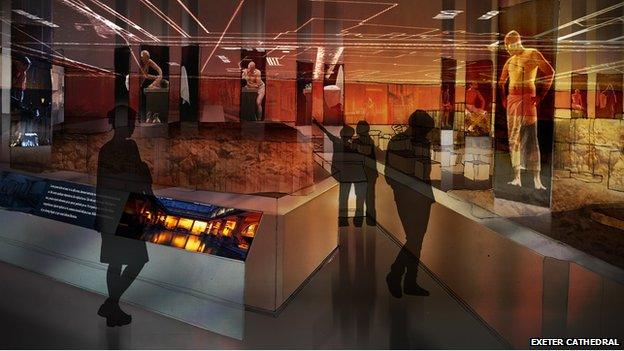
Artistic impression of the interpretation which would be offered in the underground visitor centre

The total cost of the project will be £12.8m. The cathedral expects to hear if the HLF bid has been successful at the end of April. If it is, the baths could be open to the public in 2017.
Simon Hickman, from English Heritage, said: "Exeter's Roman bathhouse and basilica are the largest set of Roman remains in the south west peninsula, and Exeter is the most south-westerly major Roman site in the country."
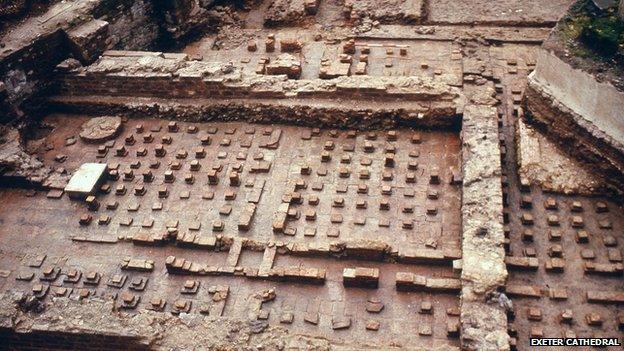
The bid includes an underground centre with interpretation to help visitors understand the remains

In 1971 the archaeologists discovered:
A large caldarium, or hot room, dating from around AD60-65
A tepidarium, or warm room
An expensive furnace house
Exercise yard
Multiple service rooms

Archaeologist Paul Bidwell, one of Britain's leading specialists in the study of Roman bathhouses, has described the Exeter Baths as "one of the first two monumental masonry buildings built in Britain" being completed circa AD60.
They became the site of the Anglo-Saxon minster which became Exeter's Cathedral in 1050.
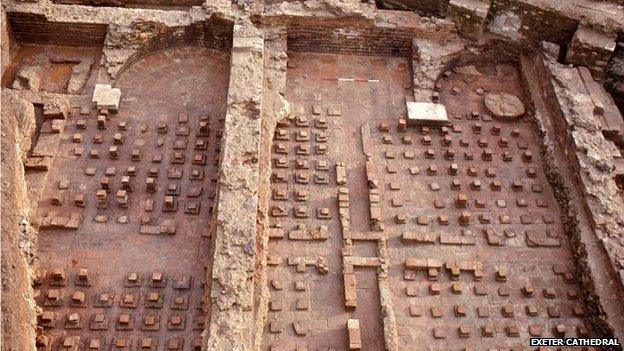
In the 1970s the site was covered in sand and grass to prevent the remains degrading
- Published4 August 2011
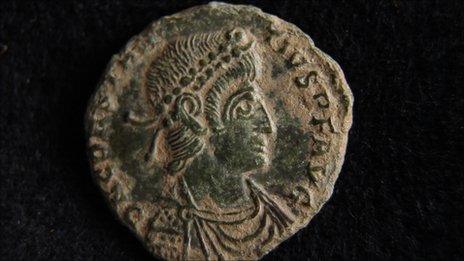
- Published22 March 2012
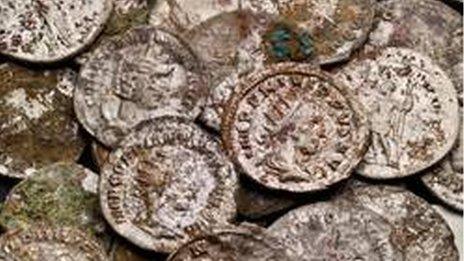
- Published8 July 2014
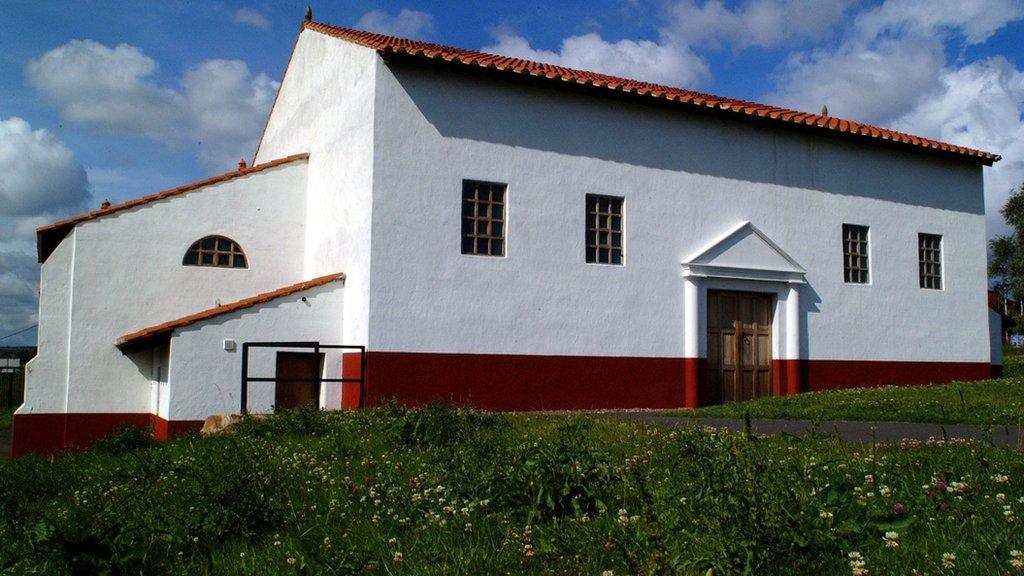
- Published21 June 2011
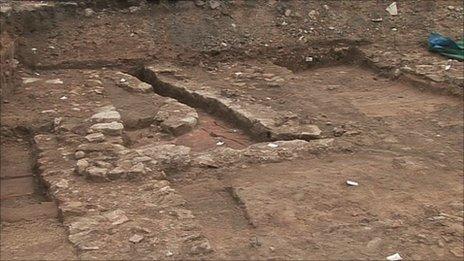
- Published13 October 2013
